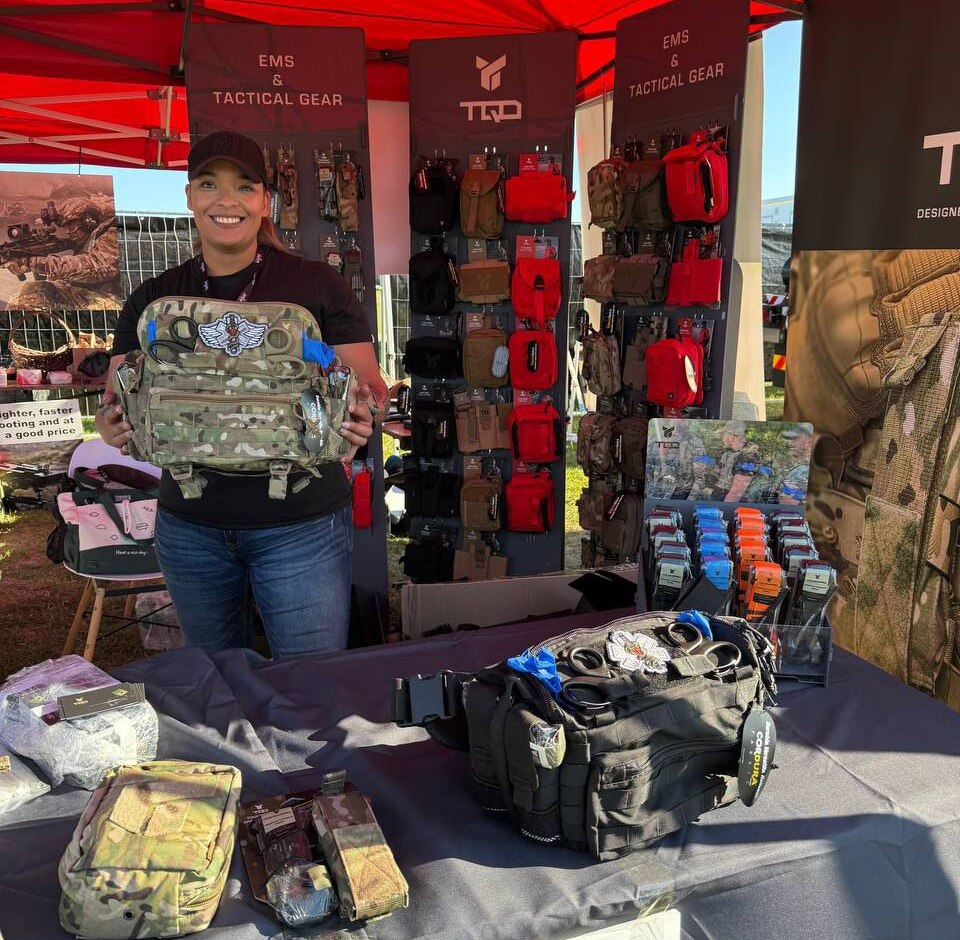Mon-Fri 9 am - 6 pm Sat / Sun - day off
Hemostatic tourniquets in extreme conditions
In an emergency, life can be a matter of seconds, and your equipment needs to work flawlessly. However, extreme conditions, such as extreme cold, heat, or heavy rain, can significantly affect the effectiveness of even the highest quality equipment, including hemostatic tourniquets. Tourniquets are often used in the most difficult circumstances - on the battlefield, in a natural disaster zone, or in emergency medicine. That is why it is important to understand how they react to various environmental factors and what can be done to ensure that their functionality remains stable. In this article, we'll take a closer look at how tourniquets work in conditions that can push them to their limits.
Impact of extreme conditions on tourniquet performance
Extreme conditions pose numerous challenges to the materials and design of tourniquets, which can affect their ability to stop bleeding quickly and effectively. For example, in cold climates, tourniquets can lose their flexibility due to a drop in temperature, making it difficult to apply them correctly. Freezing of mechanisms such as buckles or screws can render them inoperable at a critical moment. Heat, on the other hand, contributes to the accelerated wear of materials, especially synthetic fabrics, and can weaken connecting elements. Humidity and contaminants, such as dirt or sand, can block the tightening mechanisms, reducing the effectiveness of the hemostatic barrier or even disabling it completely. These issues need to be taken into account both when selecting a tourniquet and when using it in the field. Thorough testing and training can significantly reduce the risks.
Peculiarities of using tourniquets in different climatic conditions
The variety of climatic conditions creates specific challenges for the use of tourniquets. Each situation requires taking into account different factors that affect the materials, mechanisms, and performance of the equipment.
Cold climate
At low temperatures, tourniquet materials often lose their elasticity. This applies to both synthetic fabrics and plastic components, which can become brittle. In such conditions, the application of the tourniquet becomes more difficult, as the stiffness of the materials makes the process less accurate and requires more effort. The frozen hands of both the victim and the person providing assistance can become an additional obstacle. To avoid these problems, it is important to choose tourniquets made of frost-resistant materials and to train with gloves on. By the way, we have conducted tests on the stress resistance of tourniquets to cold climates. Learn more in the video.
High temperatures
In hot climates, the tourniquet materials are subject to thermal wear. Constant exposure to high temperatures can cause fabrics to delaminate and fasteners to loosen. Tourniquets made of lower-quality materials often lose their strength and durability, which increases the risk of failure at a critical moment. For such conditions, it is necessary to choose products with heat-resistant properties and regularly check their condition.
Humid environments
High humidity, frequent rains or exposure to water can negatively affect the efficiency of tourniquets. Water penetrates the fabrics, increasing the risk of stretching, and metal components can rust. Dirt and sand that gets into the mechanisms can also block their operation or act as a damaging abrasive. If the tourniquets are intended for use in wet conditions, they should be equipped with water-repellent coatings and simple mechanisms that can be easily cleaned of dirt.
Difficult conditions on the battlefield
The battlefield is a combination of various extreme conditions: high and low temperatures, high humidity, pollution and mechanical damage. The tourniquet must demonstrate maximum versatility and reliability in such conditions. Soldiers should thoroughly test the equipment before using it, making sure it can withstand any tests. Additionally, it should be borne in mind that tourniquets that have not been certified for combat conditions may not be effective.
Recommendations for preparing hemostatic tourniquets for extreme conditions
First of all, you should pay attention to tourniquets that have been certified for use in extreme conditions. They must be made of durable materials that are resistant to temperature extremes, moisture, and mechanical damage. It is important to check the manufacturer's recommendations and feedback from users who have used the tourniquets in difficult conditions. The skills of quick and correct application of a tourniquet are also critical. Training should take into account the specifics of the climate: for example, applying with gloves, in a humid environment or with limited visibility. Regular practice will help you act confidently even in stressful situations.
Tourniquets should be stored in places that are protected from excessive humidity, extreme temperatures and direct sunlight. It is recommended to use waterproof bags or special covers for transportation. In difficult conditions, one tourniquet may not be sufficient, so it is recommended to have additional pieces of equipment, especially if you are expected to stay in the risk zone for a long time. Before each use, check the mechanisms for serviceability, integrity of materials, and absence of damage. If any defects are found, the tourniquet should be replaced. Following these recommendations will significantly increase the efficiency of tourniquets in extreme conditions and help save lives in critical situations.
Preparedness for any challenges
Awareness of the importance of quality equipment and proper training are key to the successful use of tourniquets in difficult conditions. Among the modern solutions, we offer the TQ Dnipro Gen 2 model, which is designed to withstand the toughest operating conditions. Thanks to the use of high-quality materials and proven mechanisms, this tourniquet ensures reliability even in the most difficult climatic situations.












